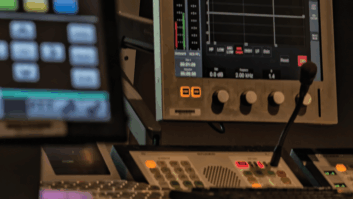Created by the Alliance for IP Media Solutions, IPMX (Internet Protocol Media Experience) is a set of open standard-based protocols designed to ensure interoperability for AV-over-IP systems in the media, entertainment, and Pro AV industries.
In late May, the Video Services Forum (VSF) published the initial drafts of its TR-10 suite of Technical Recommendations for the protocol.
But what exactly is IPMX, and what impact is it likely to have on the media industry? TVBEurope spoke to PlexusAV’s director of technology Aaron Doughten and global director of business development Steven Cogels to find out more.
What is IPMX?
Steven Cogels: IPMX is a suite of technologies built upon SMPTE ST 2110, ST 2059-2 PTP and AMWA NMOS standards. The AIMS Alliance has adapted these technologies for the professional AV market, creating a standardised approach to transporting and managing high-quality audio and video signals over IP networks. PlexusAV’s integration of IPMX specifications and standards addresses the professional AV industry’s need for a single set of common, ubiquitous standards-based protocols that ensure interoperability for AV-over-IP.
Why is it different to something like NDI or Dante?
SC: NDI and Dante provide their own strengths and benefits, but they are vastly different from IPMX. IPMX provides an ecosystem that is not proprietary and engineered with the flexibility to operate in 1GB up to 100GB networks. No matter the scale of the system, IPMX delivers the highest quality video and audio with low latency.
Which codecs work best with IPMX and why?
SC: First we need to clarify that IPMX is basically codec agnostic. IPMX supports JPEG-XS and uncompressed at the moment but more codecs will be added to the official standard.
What does IPMX mean for the broadcast industry?
Aaron Doughten: IPMX offers a great alternative for companies that do not want to spend the money or want to deal with the complexity of uncompressed ST 2110 systems. NDI is popular as an alternative, but it doesn’t fit the requirement of all broadcasters and content creators.
IPMX offers support for multiple codecs and supports anything from 1GB to 100GB networks. This makes it more flexible and future-proof. Compared to ST 2110-based networks, IPMX provides significantly reduced network complexity and lower costs
Where do you see IPMX having a significant impact on broadcast workflows? Could it be employed in remote productions?
AD: The broadcast industry is familiar with the complexities and cost of ST 2110 systems. IPMX adapts these technologies to offer more flexibility, including the ability to operate without PTP and support for asynchronous sources. It also relaxes the timing models, making it much easier for software and hardware implementations to co-exist in the same network. In other words, IPMX creates a more user-friendly and budget-friendly offering, while still maintaining all the benefits of ST 2110 systems’ separate video, audio and metadata flows. IPMX could be used in remote production, contribution or anywhere ST 2110 is currently used today.
How do you see IPMX evolving?
AD: This is a great question, because there are many possibilities. IPMX has been developed to support different compression levels, anything from uncompressed to high compression (like HEVC/H.264). The control plane for IPMX is also evolving to control not only ST 2110 type workflows, but also compressed transport stream and other types of workflows. This flexibility opens up IPMX to many different types of applications and budget levels across the broadcast, creation and Pro AV markets.
We’re seeing evermore crossover between AV and broadcast in terms of standards. How do you see that developing in the next few years?
SC: Although the two markets have been growing towards each other there are still differences. The broadcast market has been working with standards for many years, simply because if you distribute a signal to thousands or even millions of viewers a standard is the only option.
The Pro AV market however is just understanding the value of standards.
The broadcast market can also not simply be seen as one, especially when we look at content creation. A large broadcaster simply has different requirements compared to a university that also creates vast amounts of content. The content creation part is what links the two markets and the rise of software for content creation is a big aggregator.







